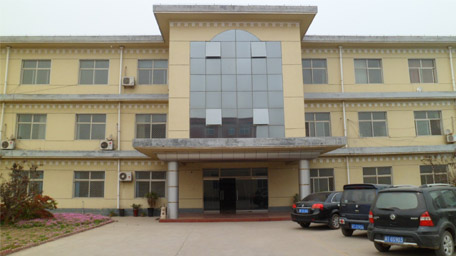- Industrial zone, South of Anping Town, Hengshui, Hebei, China.
- sales@hfpetromesh.com
- +86-18931809706
 Afrikaans
Afrikaans  Albanian
Albanian  Amharic
Amharic  Arabic
Arabic  Armenian
Armenian  Azerbaijani
Azerbaijani  Basque
Basque  Belarusian
Belarusian  Bengali
Bengali  Bosnian
Bosnian  Bulgarian
Bulgarian  Catalan
Catalan  Cebuano
Cebuano  Corsican
Corsican  Croatian
Croatian  Czech
Czech  Danish
Danish  Dutch
Dutch  English
English  Esperanto
Esperanto  Estonian
Estonian  Finnish
Finnish  French
French  Frisian
Frisian  Galician
Galician  Georgian
Georgian  German
German  Greek
Greek  Gujarati
Gujarati  Haitian Creole
Haitian Creole  hausa
hausa  hawaiian
hawaiian  Hebrew
Hebrew  Hindi
Hindi  Miao
Miao  Hungarian
Hungarian  Icelandic
Icelandic  igbo
igbo  Indonesian
Indonesian  irish
irish  Italian
Italian  Japanese
Japanese  Javanese
Javanese  Kannada
Kannada  kazakh
kazakh  Khmer
Khmer  Rwandese
Rwandese  Korean
Korean  Kurdish
Kurdish  Kyrgyz
Kyrgyz  Lao
Lao  Latin
Latin  Latvian
Latvian  Lithuanian
Lithuanian  Luxembourgish
Luxembourgish  Macedonian
Macedonian  Malgashi
Malgashi  Malay
Malay  Malayalam
Malayalam  Maltese
Maltese  Maori
Maori  Marathi
Marathi  Mongolian
Mongolian  Myanmar
Myanmar  Nepali
Nepali  Norwegian
Norwegian  Norwegian
Norwegian  Occitan
Occitan  Pashto
Pashto  Persian
Persian  Polish
Polish  Portuguese
Portuguese  Punjabi
Punjabi  Romanian
Romanian  Russian
Russian  Samoan
Samoan  Scottish Gaelic
Scottish Gaelic  Serbian
Serbian  Sesotho
Sesotho  Shona
Shona  Sindhi
Sindhi  Sinhala
Sinhala  Slovak
Slovak  Slovenian
Slovenian  Somali
Somali  Spanish
Spanish  Sundanese
Sundanese  Swahili
Swahili  Swedish
Swedish  Tagalog
Tagalog  Tajik
Tajik  Tamil
Tamil  Tatar
Tatar  Telugu
Telugu  Thai
Thai  Turkish
Turkish  Turkmen
Turkmen  Ukrainian
Ukrainian  Urdu
Urdu  Uighur
Uighur  Uzbek
Uzbek  Vietnamese
Vietnamese  Welsh
Welsh  Bantu
Bantu  Yiddish
Yiddish  Yoruba
Yoruba  Zulu
Zulu
- Afrikaans
- Albanian
- Amharic
- Arabic
- Armenian
- Azerbaijani
- Basque
- Belarusian
- Bengali
- Bosnian
- Bulgarian
- Catalan
- Cebuano
- Corsican
- Croatian
- Czech
- Danish
- Dutch
- English
- Esperanto
- Estonian
- Finnish
- French
- Frisian
- Galician
- Georgian
- German
- Greek
- Gujarati
- Haitian Creole
- hausa
- hawaiian
- Hebrew
- Hindi
- Miao
- Hungarian
- Icelandic
- igbo
- Indonesian
- irish
- Italian
- Japanese
- Javanese
- Kannada
- kazakh
- Khmer
- Rwandese
- Korean
- Kurdish
- Kyrgyz
- Lao
- Latin
- Latvian
- Lithuanian
- Luxembourgish
- Macedonian
- Malgashi
- Malay
- Malayalam
- Maltese
- Maori
- Marathi
- Mongolian
- Myanmar
- Nepali
- Norwegian
- Norwegian
- Occitan
- Pashto
- Persian
- Polish
- Portuguese
- Punjabi
- Romanian
- Russian
- Samoan
- Scottish Gaelic
- Serbian
- Sesotho
- Shona
- Sindhi
- Sinhala
- Slovak
- Slovenian
- Somali
- Spanish
- Sundanese
- Swahili
- Swedish
- Tagalog
- Tajik
- Tamil
- Tatar
- Telugu
- Thai
- Turkish
- Turkmen
- Ukrainian
- Urdu
- Uighur
- Uzbek
- Vietnamese
- Welsh
- Bantu
- Yiddish
- Yoruba
- Zulu
metal grate sidewalk
Metal Grate Sidewalks A Blend of Functionality and Aesthetics
In urban environments worldwide, sidewalks play a crucial role in facilitating pedestrian movement while ensuring an aesthetically pleasing landscape. One innovative solution that has gained traction in recent years is the use of metal grates in sidewalk design. Metal grate sidewalks not only serve functional purposes but also enhance the visual appeal of cityscapes.
Metal grate sidewalks are constructed using durable materials such as steel or aluminum. These grates provide several benefits over traditional concrete or asphalt sidewalks. One of the primary advantages is the increased durability and longevity of metal grates. Unlike concrete, which can crack and degrade over time due to weather conditions and heavy foot traffic, metal grates are resistant to wear and tear. They can withstand various environmental stresses, making them an ideal choice for high-traffic pedestrian areas.
Another significant benefit of metal grates is their ability to promote drainage. Traditional sidewalks often create runoff problems, leading to water accumulation, puddling, and even flooding in some cases. In contrast, metal grates allow water to pass through, preventing standing water that can pose safety hazards for pedestrians. This permeability not only helps in maintaining a cleaner urban environment but also reduces the risk of slippery surfaces, making sidewalks safer for everyone.
metal grate sidewalk

In addition to their functional advantages, metal grates also offer the opportunity for creative design. Many cities have begun to embrace unique patterns and styles in their sidewalks, incorporating not only practicality but also artistry. Grates can be custom-designed to reflect the local culture, history, or artistic trends, thereby enhancing the overall aesthetic of public spaces. This thoughtful integration of design helps to create a sense of place and identity within urban areas. Cities such as New York and San Francisco have successfully implemented artistic metal grates that serve as both a functional element and a form of public art.
Moreover, metal grate sidewalks can contribute to sustainability efforts within urban planning. The use of recyclable metals reduces the carbon footprint associated with sidewalk construction and maintenance. Additionally, the open design of the grates allows sunlight to reach underlying vegetation, encouraging plant growth and biodiversity in urban settings. This kind of design promotes greenery and aids in the management of urban heat islands, demonstrating that functionality and environmental consciousness can coexist in urban design.
In conclusion, metal grate sidewalks represent an innovative intersection of functionality, sustainability, and aesthetic appeal in urban environments. As cities continue to evolve, the adoption of such materials and designs will likely play a vital role in shaping pedestrian experiences. By prioritizing durability, safety, and creativity, cities can create vibrant, engaging spaces that not only serve their immediate purpose but also enhance the overall quality of urban life. Embracing metal grates in sidewalk design is not just a trend; it’s a step towards smarter, more sustainable city planning.
-
Welded Steel Bar Grating: The Strongest Choice for Industrial FlooringNewsMay.21,2025
-
Steel Grating for Sale: The Ultimate Anti-Slip SolutionNewsMay.21,2025
-
Steel Frame Shaker Screens: Unmatched Durability for Demanding OperationsNewsMay.21,2025
-
Shaker Screens: Your Ultimate Solution for Oil & Gas FiltrationNewsMay.21,2025
-
Press Locked Steel Grating: The Smarter Choice for Heavy-Duty FlooringNewsMay.21,2025
-
Helicopter Deck Safety Nets: Protect Your Crew and EquipmentNewsMay.21,2025